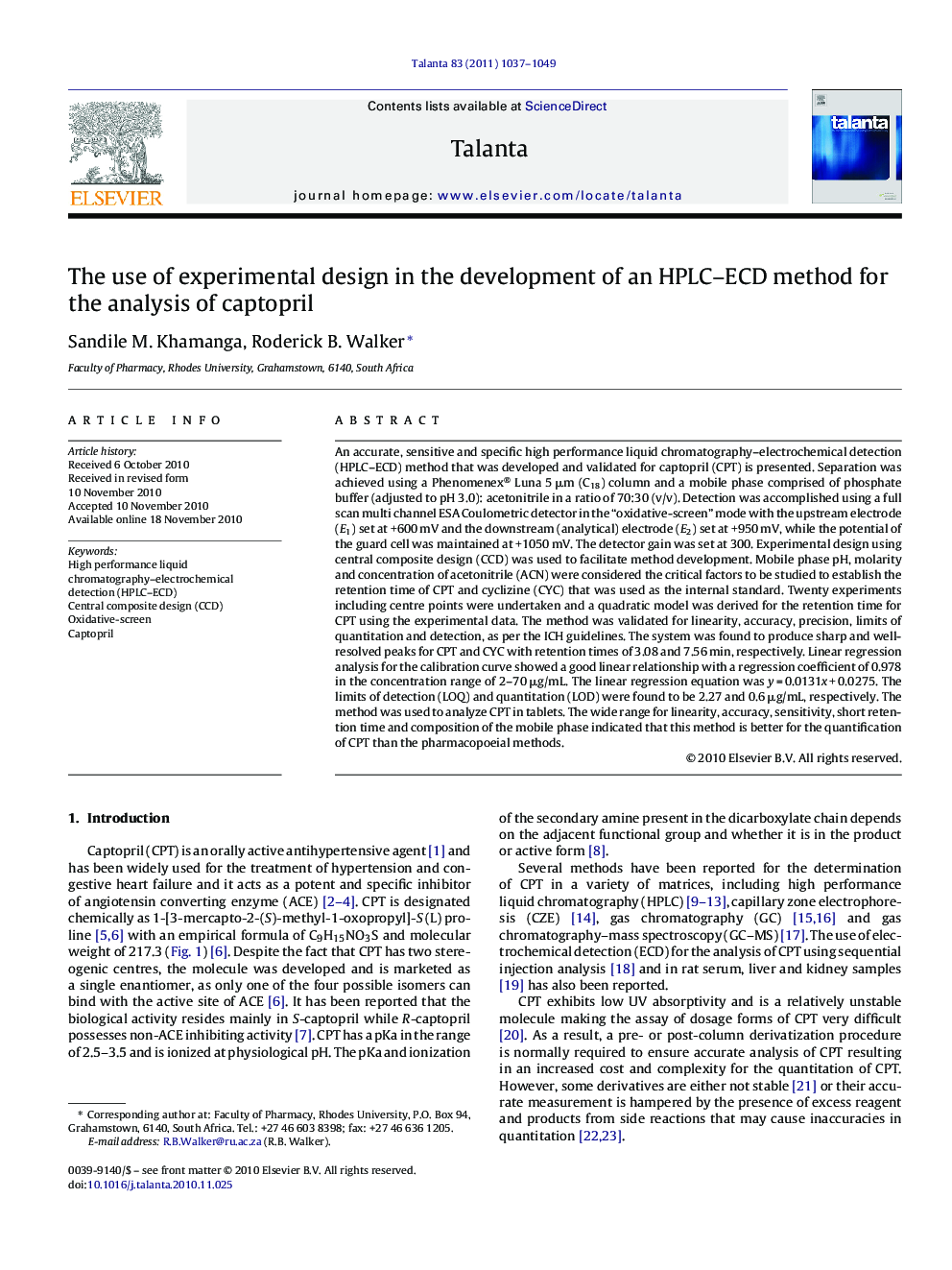| Article ID | Journal | Published Year | Pages | File Type |
|---|---|---|---|---|
| 1245078 | Talanta | 2011 | 13 Pages |
An accurate, sensitive and specific high performance liquid chromatography–electrochemical detection (HPLC–ECD) method that was developed and validated for captopril (CPT) is presented. Separation was achieved using a Phenomenex® Luna 5 μm (C18) column and a mobile phase comprised of phosphate buffer (adjusted to pH 3.0): acetonitrile in a ratio of 70:30 (v/v). Detection was accomplished using a full scan multi channel ESA Coulometric detector in the “oxidative-screen” mode with the upstream electrode (E1) set at +600 mV and the downstream (analytical) electrode (E2) set at +950 mV, while the potential of the guard cell was maintained at +1050 mV. The detector gain was set at 300. Experimental design using central composite design (CCD) was used to facilitate method development. Mobile phase pH, molarity and concentration of acetonitrile (ACN) were considered the critical factors to be studied to establish the retention time of CPT and cyclizine (CYC) that was used as the internal standard. Twenty experiments including centre points were undertaken and a quadratic model was derived for the retention time for CPT using the experimental data. The method was validated for linearity, accuracy, precision, limits of quantitation and detection, as per the ICH guidelines. The system was found to produce sharp and well-resolved peaks for CPT and CYC with retention times of 3.08 and 7.56 min, respectively. Linear regression analysis for the calibration curve showed a good linear relationship with a regression coefficient of 0.978 in the concentration range of 2–70 μg/mL. The linear regression equation was y = 0.0131x + 0.0275. The limits of detection (LOQ) and quantitation (LOD) were found to be 2.27 and 0.6 μg/mL, respectively. The method was used to analyze CPT in tablets. The wide range for linearity, accuracy, sensitivity, short retention time and composition of the mobile phase indicated that this method is better for the quantification of CPT than the pharmacopoeial methods.
